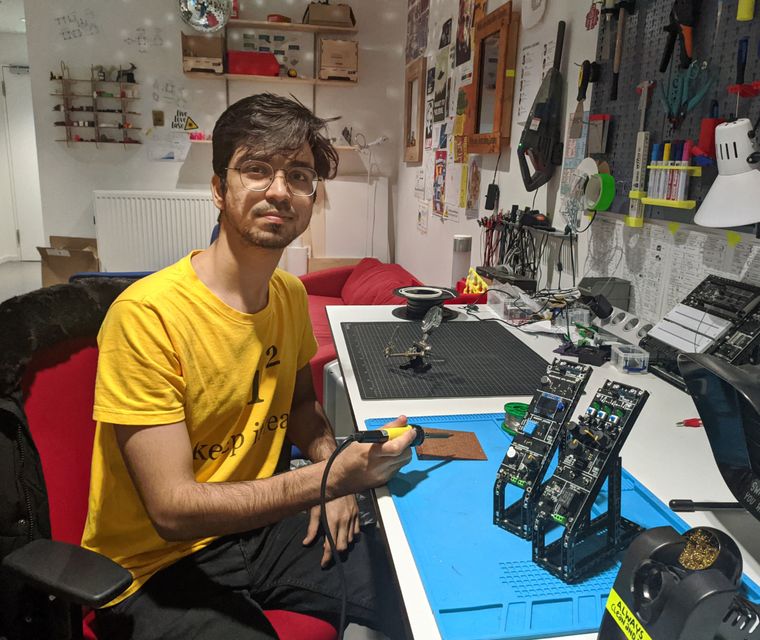Do you dream of studying in Moldova?
Er... not really.
What about Afghanistan, Mozambique or Somalia?
Eh? No, not at all.
That seems about right. Except, it is not.
According to data shared by the ministry of external affairs in Parliament in August 2022, Indians who travelled abroad for education between 2019 and 2022 ended up in 228 countries/dependent islands. While a majority of students from India continue to go to the developed world, a few of them are even going to countries that are less developed than India, like Afghanistan (at least 60), Mozambique (15) and Somalia (one) in Africa, and Nauru (seven), an island country in Oceania.
Why? According to D. Dhanuraj, chairman, Centre for Public Policy Research, such choices reflect the “anxiety” of an aspirational generation. “They feel that educated Indians in less developed countries have an advantage,” he says. “There is less competition and if they stay on after their studies, they can build successful businesses and make good money. We hear many such stories, especially from African countries.”
Another reason for choosing smaller countries is the fee. Mohammed Abdul Raheem, who is studying medicine in Moldova (one of Europe’s poorest countries), says the tuition fee he has to pay over six years at the Nicolae Testemiţanu State University of Medicine and Pharmacy, the country’s only state-run medical university, is less than the fees charged by private universities in India. This is not indicative of low standards, says Joe Sharon, another student at the university.
“The government places great emphasis on developing and upgrading infrastructure and facilities,” he says. Indian students now occupy more than 40 per cent of the seats at Nicolae Testemiţanu State.
These microtrends, while noteworthy, represent just the tip of the iceberg. The larger trend of increased student migration from India is evident in the numbers. As per data shared by Union Minister of State for Education Subhas Sarkar in the Lok Sabha in February, 30.13 lakh Indian students have gone abroad for higher studies since 2017. In 2022 alone, 7.5 lakh students left―a 69 per cent increase compared with 2021 and a 28 per cent rise from the pre-pandemic figure in 2019.
According to a 2021 report by Redseer Strategy Consultants, spending by Indian students on higher education abroad―mainly tuition, enrolment and living expenses―is poised to be more than $75 billion (over 06 lakh crore) by 2024. Most Indian students choose countries such as the US, the UK, Canada and Australia. Germany and France, too, have become preferred destinations in recent years.
“If we go back a couple of decades, people were going, but in fewer numbers,” says Ankit Mehra, CEO and co-founder of education finance marketplace GyanDhan. “That had a lot to do with a lack of awareness and an unfavourable socioeconomic structure. Now, India has a growing middle-class and educational opportunities are limited, especially when it comes to quality education. The other reason why people want to study abroad is that they want to use education as a way to migrate.”
Rechitha Mary Mathews, who is pursuing a postgraduate diploma in health care administration at St. Lawrence College in Kingston, Canada, says that the chance to lead a better life was the major reason she decided to study abroad. “Renowned universities and the thriving job market here are also attractions. Though I have a huge education loan, with the job prospects here, I am confident that I can pay it back in no time.”
The increased availability of loans to study abroad is helping students from middle-class families to pursue the dream of foreign education. In the last 10 years, 4.61 lakh students have availed loans from public sector banks to study abroad. In 2012-2013, the number was 20,366. And in 2021-2022, it was 69,898.
Mehra says that in 2015 (when GyanDhan was founded), no Indian private sector banks were giving education loans to study abroad. “And, [most] public sector banks were giving loans only up to 17.5 lakh,” he says. “So, the products were not there. And that was something which was restricting demand.” But, in the second half of the past decade, more banks and financial companies recognised the huge market opportunity. “They understand that if they do loans right, there is good business on offer,” says Mehra. “Because [overseas education] loans are typically longer tenure loans. So, the number of products and the accessibility to them have increased.”
Dhanuraj says the prevalent political, economic and cultural conditions in India, too, fuelled the increased migration. “Success stories of Indian-origin people in foreign countries are now getting greater visibility,” he says. “Aspirational youth think that this cannot be achieved by staying. They want a liberal and competitive environment. Troubles at our top institutions, like the Jawaharlal Nehru University, have affected perception. They think our campuses are not peaceful. The government’s approach has also created insecurity, though some fears are exaggerated. Overall, they wonder whether it is a sensible idea to stay in India.”
Another perception, says Dhanuraj, is that our higher education institutions are not independent and autonomous and that we are behind in STEM (science, technology, engineering and mathematics) subjects. An alarming number of higher education seats, especially in STEM courses, are vacant. About 34 per cent of engineering seats were vacant in 2021-2022. Even in IITs, NITs and IIITs, over 7,000 seats in PG courses and over 3,000 seats in PhD programmes were vacant.

Aneeshma Peter, postdoctoral researcher at the University of Alberta, migrated to Canada in 2017 after becoming convinced of the “unfavourable atmosphere” in Indian universities. “In India, it takes at least five years to finish a PhD,” she says. “In Canada, Europe or Australia, you can finish a PhD in three to four years. Canada offers a good research environment―in terms of time, money, work culture and relationship with lab mates―and a multicultural space. In India, I witnessed people becoming mentally stressed because of pressure from supervisors. At times, they have to compromise on their work ethic to please supervisors. Student rights and wellness get high priority here.”
The Redseer report observes that around 70 per cent of outbound students are opting for specialised and advanced courses. It says such courses in India are offered in few institutes, resulting in higher competition, and cites lack of funding as one of the main issues restricting the potential of universities to offer specialised courses, especially cost-intensive STEM programmes. “Hence, it comes as no surprise that STEM courses are the most popular abroad. The US, Germany and Canada are some of the top destinations for the same,” it says.
Mohammed Abdul Haseeb, who is pursuing an MS in photonics at the Friedrich Schiller University Jena, a public research university in Germany, agrees with this observation. “I wanted a specialised course in optics and optical technologies,” he says. “In India, I could not find anything close, except for one course at IIT Madras, where the competition to get in is too high.”
Amrit G. Kumar, professor in the department of education at the Central University of Kerala, says the lack of autonomy in Indian universities is the major roadblock in implementing new ideas and courses. “Our universities have academic autonomy, but no financial autonomy or administrative autonomy,” he says. “It is a travesty.”
Flying into traps?
As the demand for overseas education increased, consultancies, both foreign and indigenous, have mushroomed. And, this has led to more students getting scammed.
Avinash Rai (name changed), an undergraduate student of political science at Zakir Husain Delhi College, subscribed to a two-year plan by an edtech firm that claimed to be based in Silicon Valley. He was convinced after the agency arranged a Zoom meeting with a former subscriber who he was told had secured admission in the US. The “student” vouched for the company. By the time Rai’s relationship with the firm ended one and half years later, he had spent close to 11 lakh. He finishes his degree this year and does not wish to do a “worthless” postgraduation in India. But, he is yet to find a programme abroad.
Henna Ashraf, who is currently pursuing a master’s in audiology from the Cardiff Metropolitan University, also had a bad experience with an agency. After her initial application was rejected, she secured the seat in Cardiff on her own. When she told the agency of her success, it, says Ashraf, contacted the university and tried to get her admission revoked. “It was a blatant attempt to force me to pursue a less desirable programme through them,” she says. “I was disheartened and felt betrayed by their ulterior motives.”
Denny Vattakkunnel, chairman and managing director of Santamonica, an overseas education facilitator that has been operational since 2002, says “new-born agencies” have agreements with a handful of institutions and pressurise students to join them. “There are also cases where franchises vanish after collecting money,” he says. “The government has to introduce strict regulations and new legislation, and should identify genuine overseas education facilitators.”
The University Grants Commission advises students to contact the Association of Indian Universities or visit its website (www.aiuweb.org) for information on foreign universities. But, the AIU has been unable to study the number of students going to institutions not recognised by it. Secretary general Pankaj Mittal told THE WEEK that this was because detailed data regarding migration trends was not available (the government data reveals only destinations).
Another risk that migrating students have to keep in mind is exploitation while they look for part-time jobs, which would be necessary for a majority to meet the rising costs in education hotspots. For example, in the UK, where the rent can average more than 150,000 per month, authorities are investigating five Indians suspected of recruiting Indian students to work in care homes and exploiting them.
Martin Plimmer, a senior investigating officer with the Gangmasters and Labour Abuse Authority (GLAA), told THE WEEK that 60 victims had been identified, as of March. “As students, they were allowed to work 20 hours per week, but they were working 80 and not being paid for those hours,” he says. “They were in overcrowded rooms and were charged excessive rent. They were not given contracts or payslips or the required training, and they were given false profiles.”
Plimmer adds that the recruiters threatened students that if they complained, they would be deported to India. The GLAA is preparing the criminal case against the exploiters. Plimmer says the GLAA also met 50-plus Indian students in another recent operation in Liverpool, but they said they were not victims.
“They were in overcrowded rooms and were not given contracts and payslips,” he says. “I think we are only beginning to see the true picture.”



